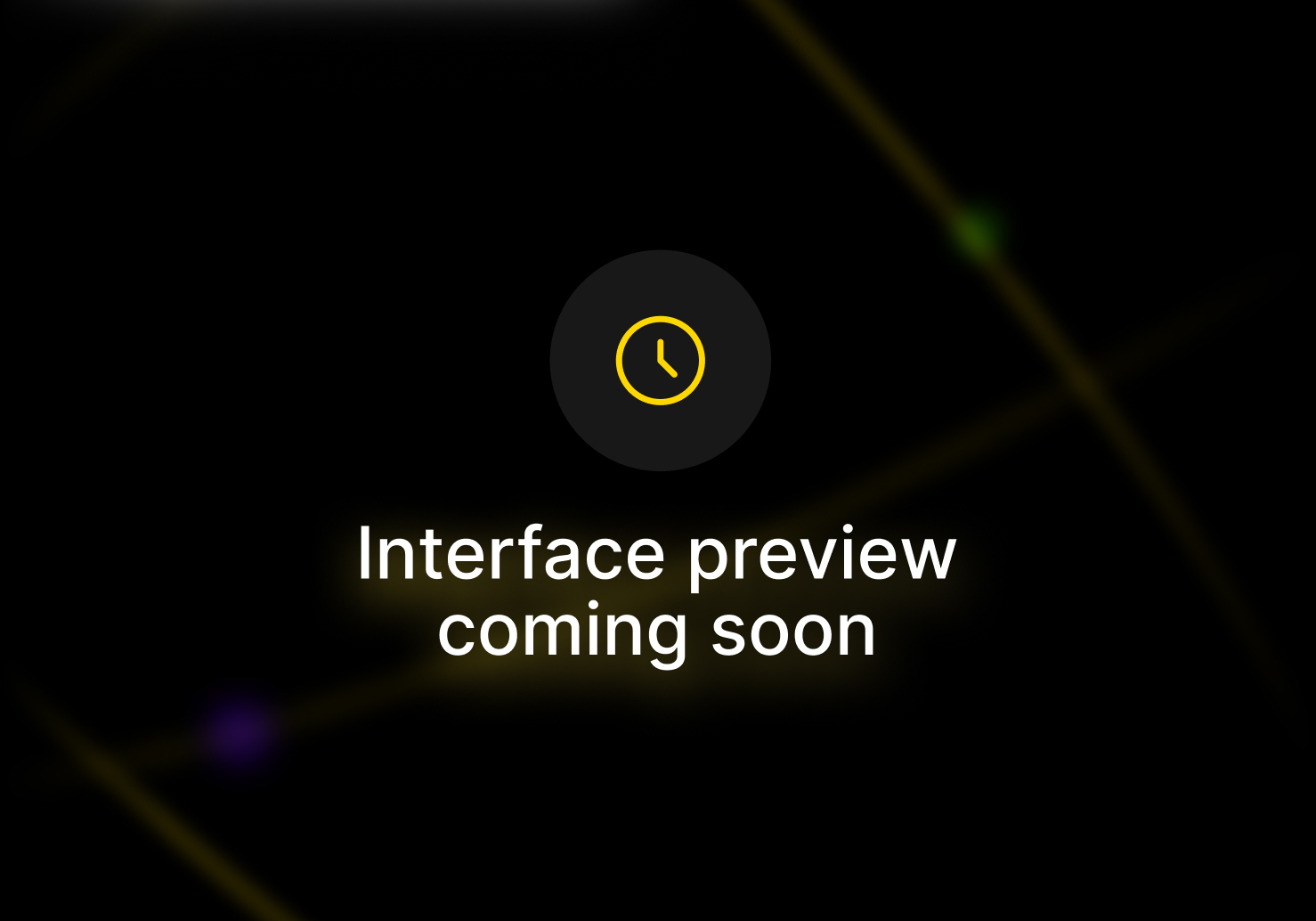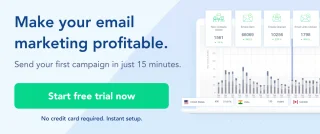2005: 1.1 billion email users
2021: 4.2 billion email users
With the growing number of users, comes greater competition to create impact.
Today emails are more than just a medium for personal or workplace communication. Emails have the power to make or break your business.
In 2021, we are busier than ever. We are always out to get more done in less time. And we probably get hundreds of emails everyday. Apart from work, how many emails do we actually open?
So how can you stand out? How can you make your emails more effective?
Answer is in a word - “Personalization”
And you can personalize your email campaigns using Dynamic Email Marketing.
“Woah, what’s that?”
Table Of Contents
What Is Dynamic Email Marketing?
Dynamic email marketing is personalizing specific parts of an email for every contact in the list. The personalized content changes based on the behavior of your contacts, or your contact’s data which includes name, age, gender, etc. You can personalize any and every piece of the content in the email like subject lines, email body, images etc.
For example, birthday emails to your contacts, emails with exclusive offers for a certain group of contacts or an individual contact, all fall under the category of dynamic email marketing.
Let's see how it can get ROI for your business.
Things That Are Key To Start Your Dynamic Email Marketing Journey
First of all, let’s talk about what you need to get started with dynamic email marketing.
1) The type of features that your ESP offers. This matters because you can only use a certain feature, that the ESP you are using provides with your selected plan. (With SendX, this will never be an issue. Hang on, I’ll tell you why)
2) The kind of data you have on your contacts. More the data about your customers, better the dynamic email content..
What Kind Of Data Is Required?
The data can be:
Demographic: Age, name, gender, location
Behavioral: Preferences, purchase data
Firmographic: Role, industry, work address
Psychographic: Lifestyle, interests, hobbies
Given above is a broad list of possible data you can collect on your contacts. Brownie points if you already do!
Using the segmentation feature, you can group your contacts based on similar interests, location, purchase behavior, etc. Once you have those specific lists ready, you can simply choose a list and decide which content is to be displayed in which group. Making these subcategories makes the process of personalization significantly better as you know which group you’re targeting.
Let’s take a hypothetical scenario to better understand this concept. Say, you are an online cloth store with a total 5k contacts, including people from all sorts of age, gender, etc. Being a smart marketer, you decide to use dynamic email marketing.
You have already collected all the required data from your contacts. The next step is segmentation. You created separate lists for men and women. Then you can divide them based on their age. Next comes the location. You wouldn’t want to recommend tank tops to contacts in Maine and coats to contacts in Florida. Right?
Now maybe some contacts in Florida are constantly purchasing tank tops while others are obsessively buying cute dresses. So being the smart person that you are, you put them into two different lists.
Umm, you would definitely not want to send a cool promo code for a pantsuit to a sophomore in high school and so on. Knowing the work/study background of your contacts come in handy here.
“C’mon is this not enough?” Nope. Because suppose a particular group of contacts are tennis players while another group contains a bunch of couch potatoes. And imagine sending a special discount coupon on tennis shoes, to the latter group. I’m a couch potato and I’m telling you this is a bad idea.
You see the importance of data?? Yes you do. Because you are smart, remember?
“But how to use this data in email campaigns?”. Let’s find out!
How To Use Dynamic Email Content In Email Campaigns To Grow Your Business?
Typically, two ways:
Email subject lines
Email body
Starting with email subject lines:
There are a lot of options to personalize the subject line of the emails you send to your contacts. You can select different variables like Name, Birthday, etc, to get the respective result on the subject line of the email (I will explain how to do it with SendX in the next section).
For example, I have added a few real-life snapshots, taken from the dynamic emails I have received from these companies, in order to give you a clearer picture of what dynamic email marketing actually looks like.
While there can be multiple ways to personalize an email, the examples below are personalized as per the contact’s name (here the contact receiving the email is me).
And let’s agree, seeing your name in the subject line makes you want to open the email. You feel good about it. Everyone likes a little attention. And this would be a perfect way to tell your contacts that you care.



Moving to email body:
Include personalized promo codes, discount offers or custom pricing for each segment in your email list.
You can use geomarketing to send the nearest retail store location to your contacts. Say you are an electronics company. Using geomarketing you can guide your contact to a nearby store to claim a specific offer.
Send your contacts a personalized birthday email to make their day special. It will also help build a relationship beyond business.
A great person once said, “Creativity has no limits or boundaries.” I believe every bit of that sentence is true and being a smart marketer, so will you.
How to Add Dynamic Content to SendX Email Campaigns?
Like I said in the previous section, you can either add dynamic email content on the subject line of the email or the body of the email. Let’s see how!
Dynamic content on subject lines:
After you login with your SendX account,
Click on Send Campaign

2. Enter the name of your campaign and other personal details.

3. Select the template of your choice

4. Enter the Email Subject. Click on Insert Personalization to select a variable that you want to be personalized. In the image below, the selected variable is Birthday which can be used for example, a birthday email. Similarly, you can select the Name variable from the dropdown to display your contact’s name in the subject line.

Dynamic content on email body:
As described in the previous part, go to Send Campaign, enter the details about the campaign and select a template of your choice.
Then scroll down on the Content tab and you will see the Email Body section.

3. To enter personalized content, simply click wherever you want the variable to be and click on Merge Tags. You will get a variety of variables to choose from the dropdown as shown below.

Then simply add the recipient(s) and schedule your email campaign to deliver the email straight to your contact’s inbox. And you’re done!
Want a variable but it’s not available? No worries, follow the three simple steps below to create a new variable (also called custom field):
Click on Contacts

2. Click on New Custom Field

3. Enter the name of the new variable and select its type like Number, Date, Text, etc. For example, if you want to personalize the emails as per your contact’s marriage anniversary, you can create a new custom field for it, and name it “Marriage Anniversary” and select the “Date” type.
Once this new variable is added, it will be visible in the Merge Tags section of the email editor. And that’s it!

Real Life Examples of Dynamic Email Marketing
Duolingo. This is a platform to learn new languages for both free and premium users. To keep the users hooked to their lessons, Duolingo sends your weekly report on your inbox. This email would be completely personal for each contact as everyone has different performance. This is a good way to guilt your users into coming back to their lessons or even appreciate them if they are doing good. I’m guilty too!
If you are a fitness, education, habit building, etc, business you can use this method to bring your users back to the platform. This is a win-win situation as both you and your users will be benefitted.



Uber. The very famous ride-hailing platform Uber knows how to woo its customers. They send these exclusive discount codes and offers for each customer based on their travel activities. The more you use them for your travel, the more offers you get.
If you are a daily commuter or if you take Ubers for travelling, you probably receive these emails too. If you are a travel company, online store, eCommerce business, etc, you can take inspiration from Uber and win the hearts of your customers by making them feel exclusive.

Conclusion
First thing is you need an email marketing platform for dynamic email marketing. My recommendation is SendX.
You care about dynamic email marketing and SendX cares about you. So you can send unlimited emails to your contacts every month and make the most out of your subscribers with targeted segmentation and personalization.
With SendX, no matter what pricing plan you are on, you get access to all the features. This is why SendX will never be an issue.
Smart marketers never make a decision in a haste. Signup for the 14-day free trial before you commit to SendX.
Also, SendX is the most affordable email marketing platform out there. The pricing starts at $7.49/mo only.
Go, check it out!
